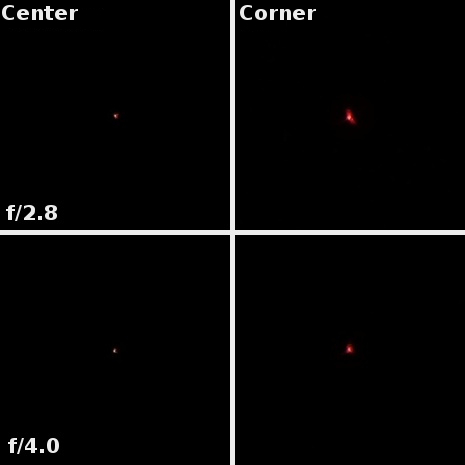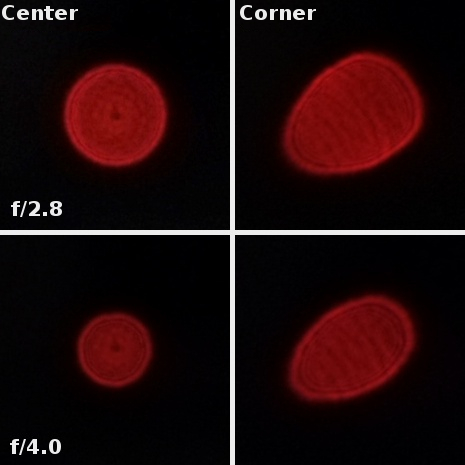Carl Zeiss Touit 12 mm f/2.8
7. Coma, astigmatism and bokeh

The astigmatism decreases on stopping down in a truly textbook fashion. At the maximum relative aperture it is still noticeable, reaching 10%; after stopping down the aperture to f/4.0 it is reduced to a very low level of less than 3% and by f/5.6 that aberration becomes imperceptible (below 1%). The average value, on all testing charts and in a distance of 3 EV from the maximum relative aperture, amounted to 4.7% which allows us to state that the tested lens doesn’t have any problems with this off-axis aberration.
Please Support UsIf you enjoy our reviews and articles, and you want us to continue our work please, support our website by donating through PayPal. The funds are going to be used for paying our editorial team, renting servers, and equipping our testing studio; only that way we will be able to continue providing you interesting content for free. |
- - - - - - - - - - - - - - - - - - - - - - - - - - - - - - - - - - - - - - - - - - - - - - - -
Defocused light points don’t look perfect – in the centre of the circle you can notice a darker area and a noticeable rim on its edge. Still, due to the parameters of the tested lens and its usage, you won’t admire large defocused areas in your photos very often so it shouldn’t be a problem.







